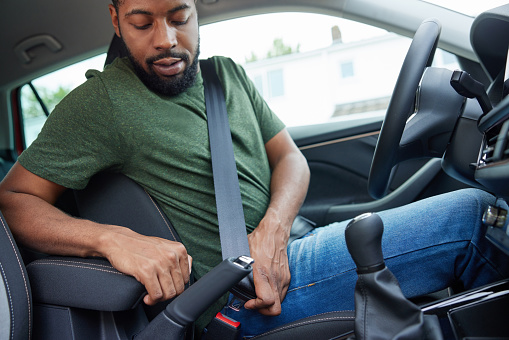Defensive driving is a crucial skill that all drivers should possess. It focuses on anticipating and avoiding potential hazards on the road, ultimately promoting safety for yourself and others.
By following these 10 basic rules of defensive driving, you can significantly reduce the risk of accidents:
- Stay alert and focused: Always maintain full concentration while driving. Avoid distractions such as texting, phone calls, or eating. Keep your eyes on the road and be aware of your surroundings at all times.
- Follow traffic rules: Adhere to speed limits, stop signs, traffic signals, and other regulations. Respect the right-of-way of other drivers, pedestrians, and cyclists. Following these rules ensures smooth traffic flow and minimizes the risk of collisions.
- Maintain a safe distance: Keep a safe distance between your vehicle and the one in front of you. This provides you with enough time to react and brake if needed. The general rule is to maintain at least a three-second gap.
- Use mirrors and check blind spots: Regularly check your mirrors to be aware of the vehicles around you. Before changing lanes or making a turn, check your blind spots by looking over your shoulder to ensure no vehicles are in your path.
- Anticipate potential hazards: Be proactive in identifying potential dangers. Scan the road ahead for any upcoming obstacles, erratic drivers, or pedestrians. Anticipating such hazards allows you to take appropriate action in advance.
- Stay visible: Make sure your vehicle’s lights are working correctly, especially during low-light conditions. Use your headlights, indicators, and hazard lights appropriately to ensure other drivers can see you clearly.
- Manage speed: Adjust your speed according to the road and weather conditions. Slow down during rain, fog, or slippery surfaces. Maintaining a safe and controlled speed helps you react swiftly to unexpected situations.
- Be cautious at intersections: Approach intersections with caution and be prepared to yield or stop if necessary. Look out for drivers running red lights or making sudden turns.
- Avoid aggressive behavior: Practice patience and avoid aggressive driving behaviors like tailgating, excessive honking, or unnecessary lane changes. These behaviors can escalate conflicts and lead to accidents.
- Plan ahead: Before starting your journey, plan your route and allow ample time to reach your destination. Rushing can increase stress levels and tempt you to take unnecessary risks on the road.
Remember, defensive driving is a mindset that prioritizes safety. By following these 10 basic rules, you can contribute to creating a safer road environment for yourself and others.
Stay focused, anticipate hazards, and always be prepared to take necessary evasive actions.
Safe driving habits benefit everyone on the road and can help prevent accidents and save lives.














